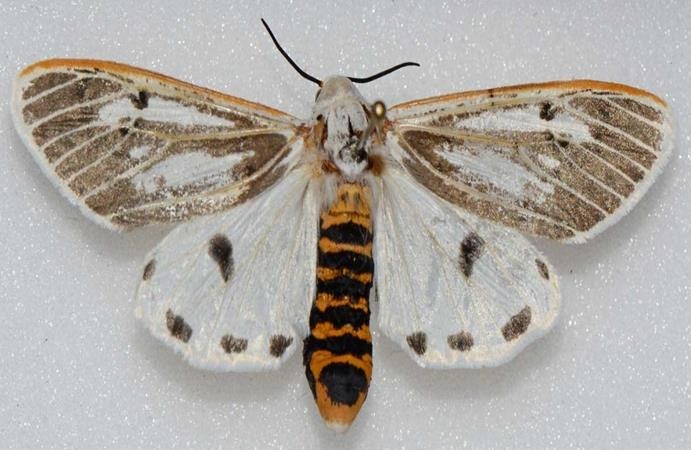|
Red hairy caterpillars: Amsacta albistriga and Amsacta moorei
Symptoms of damage
- Young larvae scrap the undersurface of leaves and the leaves become papery.
- Grown up larvae devour the entire foliage, leaving the main stem as the field grazed by cattle.
Identification of insect pest
- Egg: Round, yellowish-white eggs laid on the under surface of the leaves.
- Larva: Early instars brown and grown-up larva turn reddish brown with black bands and reddish brown hairs all over the body.
- Pupa: Pupation in earthen cells at a depth of 10-20 cm in field bunds and moist shady areas.
- Adult: Medium-sized moths, emerge after showers.
Amsacta albistriga: Forewings are white with brownish streak all over and yellowish streak along the anterior margin and head.
Hindwings are white with black markings.
Amsacta moorei: Forewings are white with brownish streak all over and reddish streak along the anterior margin and head.
Hindwings are white with black markings
Management
- Deep summer ploughing to destroy the pupa.
- Early sowing to escape from pest damage.
- Crop rotation with sorghum or pearl millet or maize will reduce pest infestation.
- Irrigate the field to avoid prolonged mid-season drought to prevent infestation.
- Install a light trap @ 1/ ha or bonfires immediately at the onset of rains to attract and kill the moths in endemic areas.
- Collect and destroy egg masses and early instar larvae in the damaged fields.
- Dig out a trench around the field to avoid the migration of caterpillars and kill them.
- Conserve natural enemies viz., spiders, coccinellids, chrysopids, parasitoids Bracon and Chelonus spp., by intercropping with pigeon pea and mung bean
- Spray nuclear polyhedrosis virus (NPV) @ 6 x 1012 POB/ac
- For grown up caterpillars apply, quinalphos 1.5 DP @ 10 kg/ac
 |
Larva |
 |
 |
Amsacta albistriga moth |
Amsacta moorei moth |
|
|



